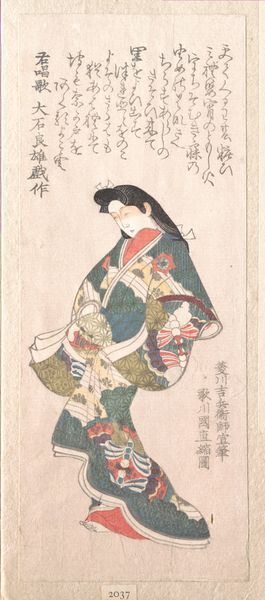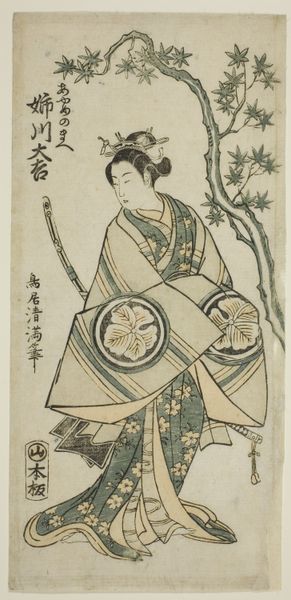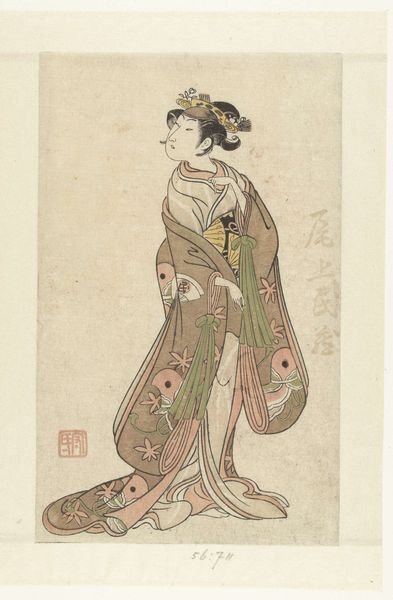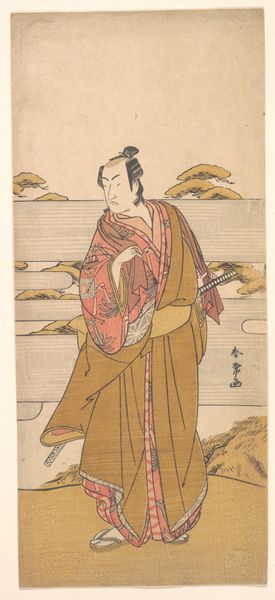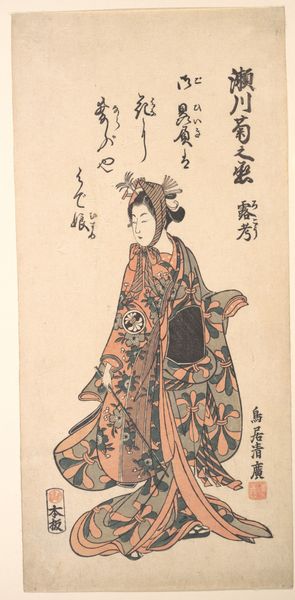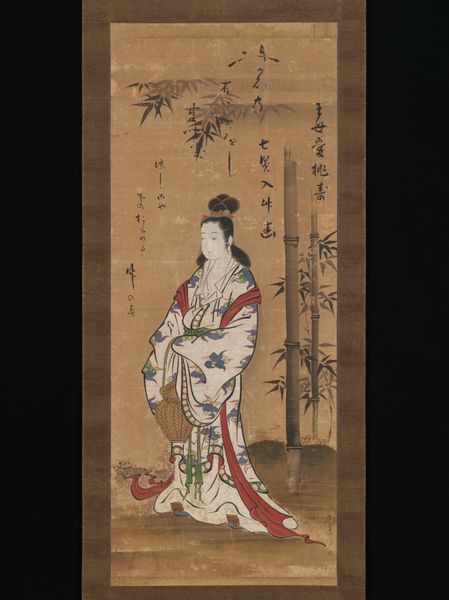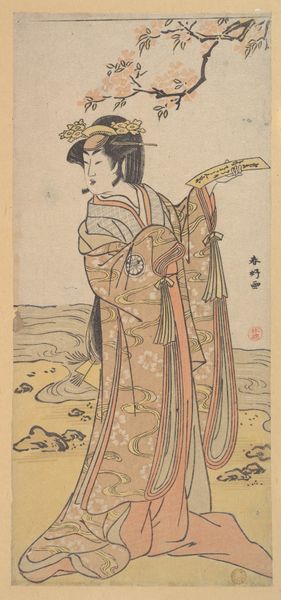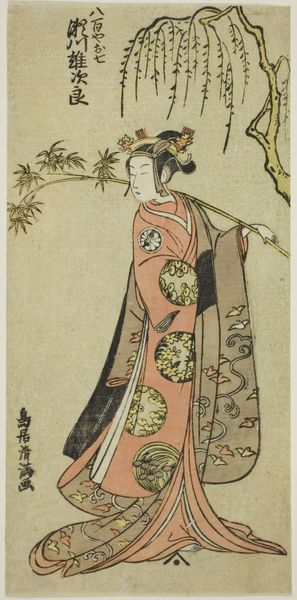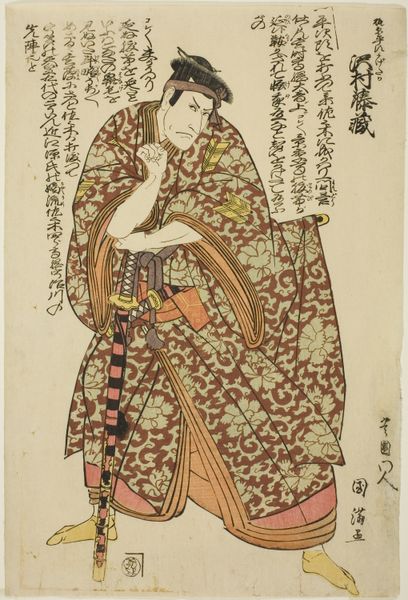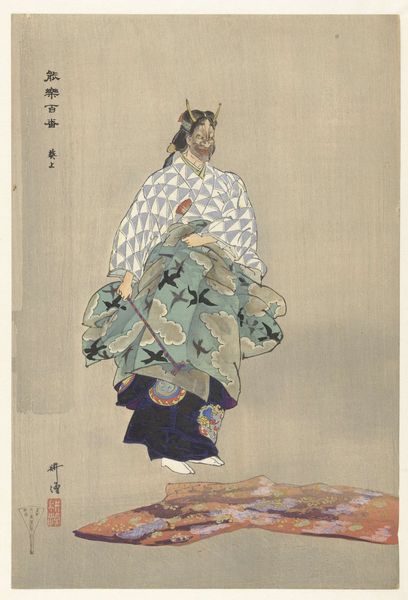
Dimensions: height 378 mm, width 258 mm
Copyright: Rijks Museum: Open Domain
Editor: This watercolour, "Actor in the No Play Hanjo" by Tsukioka Kogyo, dates from 1925 and is part of the Rijksmuseum collection. It has such a stillness to it, almost like a perfectly posed photograph. How do you interpret this work within its historical and cultural context? Curator: Considering the socio-political landscape of 1920s Japan, this piece offers a glimpse into the evolving role of traditional arts. No theatre, with its formalized gestures and masks, was supported by the aristocracy. But as Japan modernized and the social structure changed, what do you think maintaining such a refined tradition communicated to audiences at the time? Editor: Perhaps it symbolized a connection to the past, a sort of anchor during a time of rapid change? Or maybe it was about asserting a sense of cultural identity? Curator: Exactly! The artist, Tsukioka Kogyo, was known for his dedication to preserving the artistry of No theatre through his prints. The detailed costume, the precise brushstrokes... it elevates the actor but also speaks to the institutional effort required to uphold No as high art. We need to consider the influence of patrons, schools, and even the state, in how art is promoted. What feelings do you think the artist wants to arise in the viewer of the play? Editor: I suppose a feeling of reverence, maybe even a touch of melancholy given the solemn expression conveyed through the mask. It definitely prompts contemplation. Curator: Right, the cultural function here isn't merely aesthetic. It actively shapes how the past is viewed and valued in a quickly changing world. This gives it enduring political significance, doesn't it? Editor: I've learned so much about the layers of meaning behind what initially seemed like a simple portrait! Thanks. Curator: It's fascinating how social forces can frame our perception of even the most refined art forms. Thanks.
Comments
rijksmuseum about 2 years ago
⋮
Hanjo, the woman depicted here, is a prostitute who found love with a passing traveller. She loses her mind and begins to roam aimlessly. Fortunately, she is – by chance – reunited with her lover. Accordingly, the themes addressed in this play are grief, loneliness, a pure heart, and the joy of reunion.
Join the conversation
Join millions of artists and users on Artera today and experience the ultimate creative platform.
